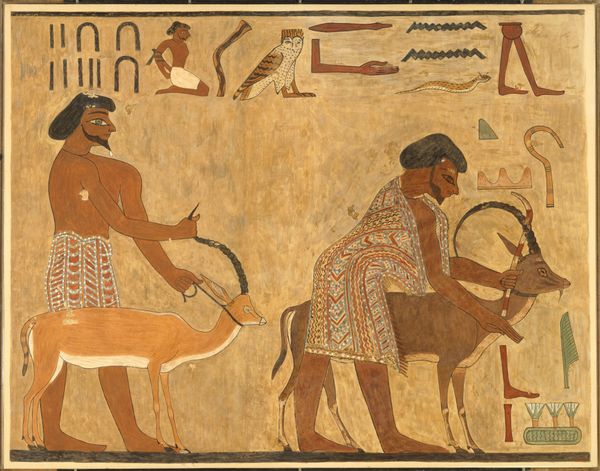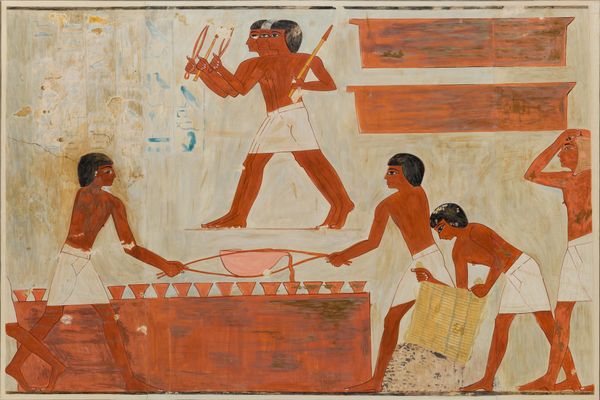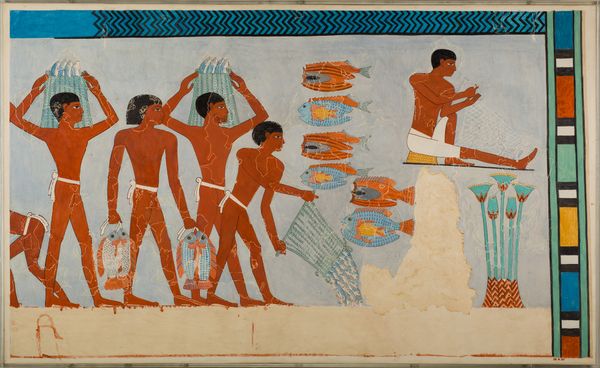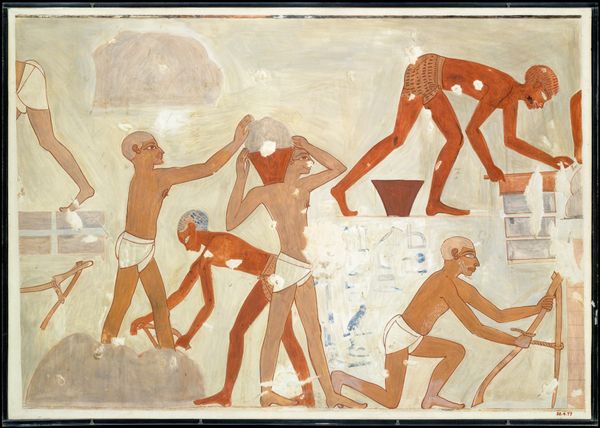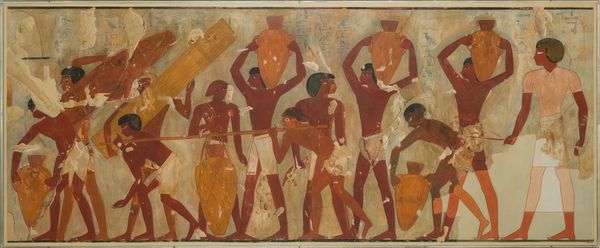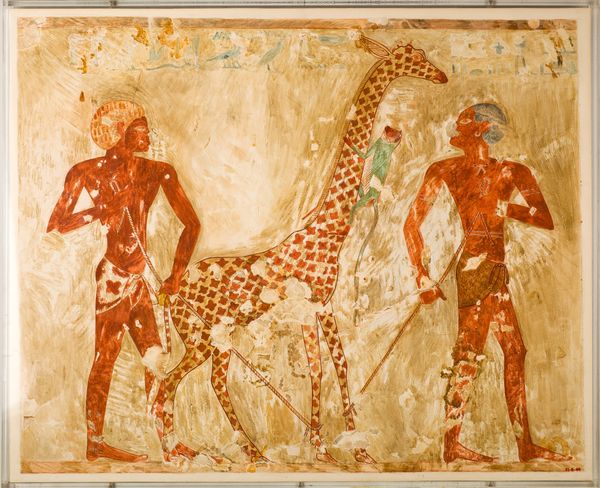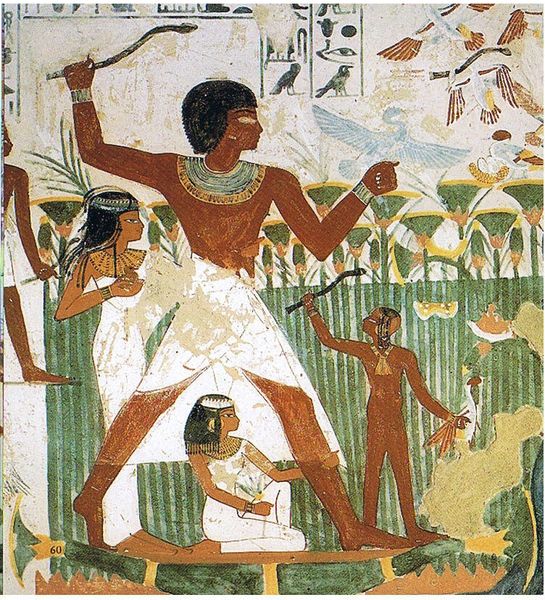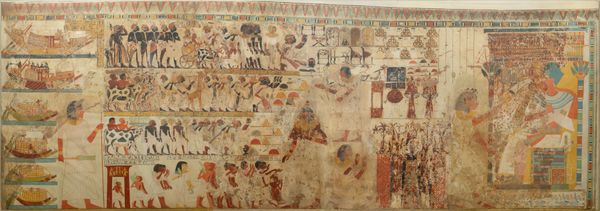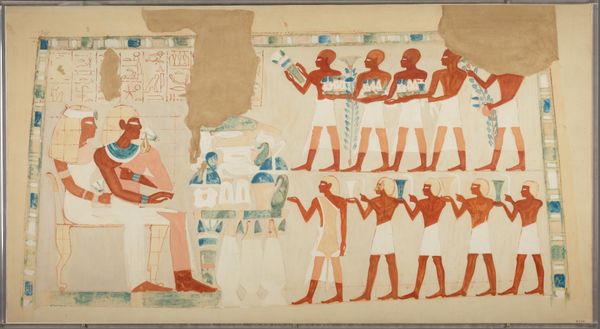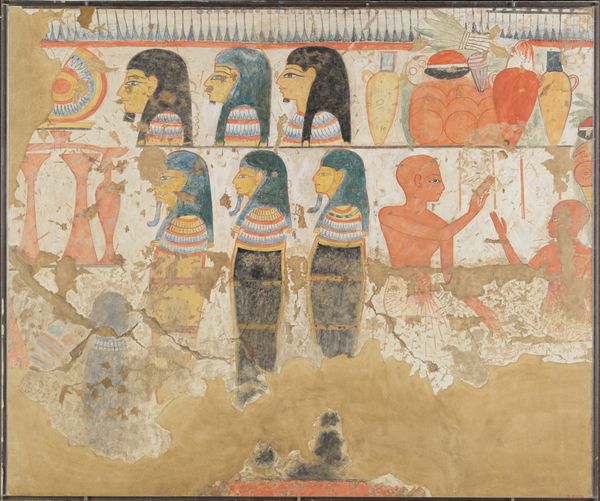
tempera, painting, mural
#
narrative-art
#
tempera
#
painting
#
landscape
#
ancient-egyptian-art
#
figuration
#
ancient-mediterranean
#
wall painting
#
history-painting
#
mural
Copyright: Public domain
It’s pretty strange to think about what life might have been like 4000 years ago. That’s around one million, four hundred and sixty thousand days! ️ Wall paintings and murals such as this agricultural scene offer a fascinating glimpse into the daily life of Ancient Egyptian people. Created around 2010 BC using natural earth pigments, the painting depicts two ploughmen and two cows. One of the men holds a stick which he raises above his head, just about to strike the cows. Above this scene, the artists have painted four grey donkeys in a single line. The donkeys all carry boxes which presumably hold work tools. ️ ‘Laden Donkeys and Ploughing’ was discovered in the Tomb of Djar (or Djari) in western Thebes. It is believed to date back to the reign of Montuhotep II. Situated near the River Nile, the tomb was first excavated between 1929 and 1930. This mural was subsequently copied onto paper by the illustrator and Egyptologist Nina de Garis Davies (1881-1965). Davies was often commissioned by the Metropolitan Museum of Art to replicate tomb and wall paintings. Her facsimiles are remarkably accurate to the authentic murals, and even include the areas of damage. Fading can be seen on the legs of the rightmost donkey. 🫏 Davies achieved this level of exactness through carefully tracing the original wall paintings. Why do you think Nina de Garis Davies’s copywork was important? By producing precise facsimiles of ancient paintings, she allowed the works to be seen by a wide range of people on an international scale. Experts, anthropologists, and art historians could study the works without needing to travel to the ruins of Thebes. This also prevented any further damage to the walls, ensuring they could be preserved for future generations.
Comments
No comments
Be the first to comment and join the conversation on the ultimate creative platform.

